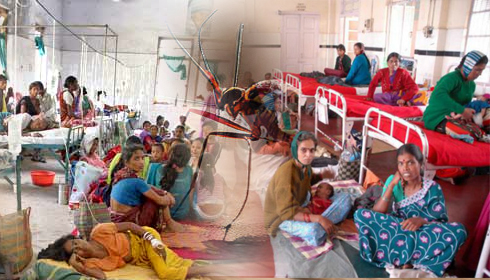
Nepal Grapples with Rising Dengue Cases Amid Climate Change and Urbanization
Nepal is facing an alarming surge in dengue cases, a mosquito-borne illness previously rare in its high-altitude regions. In just three years, the disease has expanded from the tropical plains to cooler, mountainous areas, including regions as elevated as Solukhumbu, home to Mount Everest. Experts attribute this shift to climate change and rapid urbanization, which have created suitable environments for the Aedes aegypti mosquito, the primary carrier of dengue
Only a single dengue case was reported in Nepal in 2004, but cases have escalated exponentially in recent years. In 2022, Nepal documented 62,382 cases with 281 deaths, while in 2023, cases spiked to 308,167, resulting in 1,598 deaths, representing a slight rise in fatality rate from 0.45% to 0.52%.
The disease's reach into the Kathmandu Valley and even into the southeastern Terai and Gandaki hill regions underscores its rapid geographical spread. "Once confined to certain low-altitude areas, dengue is now reported even in mountainous regions, reaching elevations where it was once unheard of," said Dr. Sher Bahadur Pun from Kathmandu’s Sukraraj Tropical and Infectious Disease Hospital. He noted that the disease’s spread has become an annual phenomenon, breaking the previous cycle of outbreaks every two to three years.
Hospitals across several districts have been overwhelmed by dengue patients experiencing severe fevers, intense body pain, and rashes. Dr. Pun explained, “The number of infected people has grown exponentially over the last decade, and each outbreak seems to be more deadly.” Kathmandu alone, situated at 1,400 meters (4,600 feet), has reported over 4,000 cases this year.
The World Health Organization (WHO) has also noted this alarming global trend, with dengue cases doubling annually since 2021. As of August 2024, over 12.3 million cases and 7,900 deaths have been reported worldwide. WHO Director-General Tedros Adhanom Ghebreyesus expressed concern, calling it an “alarming trend” as the disease continues to spread globally.
Scientists attribute Nepal’s dengue surge to climate change, which has altered temperature and rainfall patterns, favoring mosquito breeding at higher altitudes. Virologist Narayan Gyawali added, “Urbanization has created microclimates with increased warmth and humidity, ideal conditions for the Aedes mosquito.”
This crisis also highlights inequities in climate change impacts. Gokarna Dahal, from Nepal’s Health Ministry, said it is an “injustice” that Nepal, a minimal contributor to global emissions, suffers severe consequences from global warming. Human Rights Watch’s Meenakshi Ganguly echoed this sentiment, stating, “Countries most responsible for emissions must do more to protect those in vulnerable regions from climate-related health risks.”
As dengue’s reach expands annually, Nepal braces for the ongoing battle. Pointing out that the administration is prepared to tackle the situation, a Government health official said, “Our preparation now is to fight it every year.